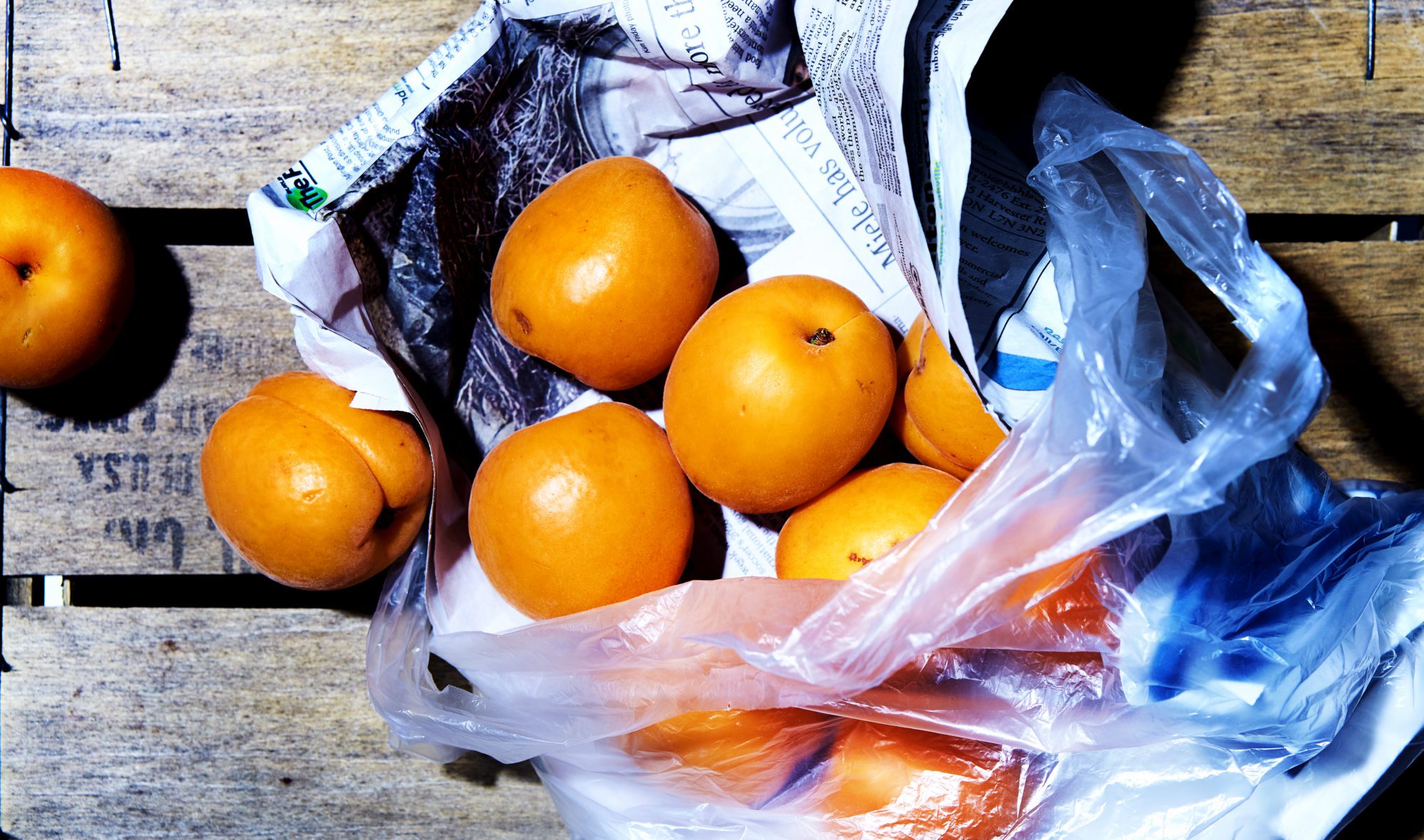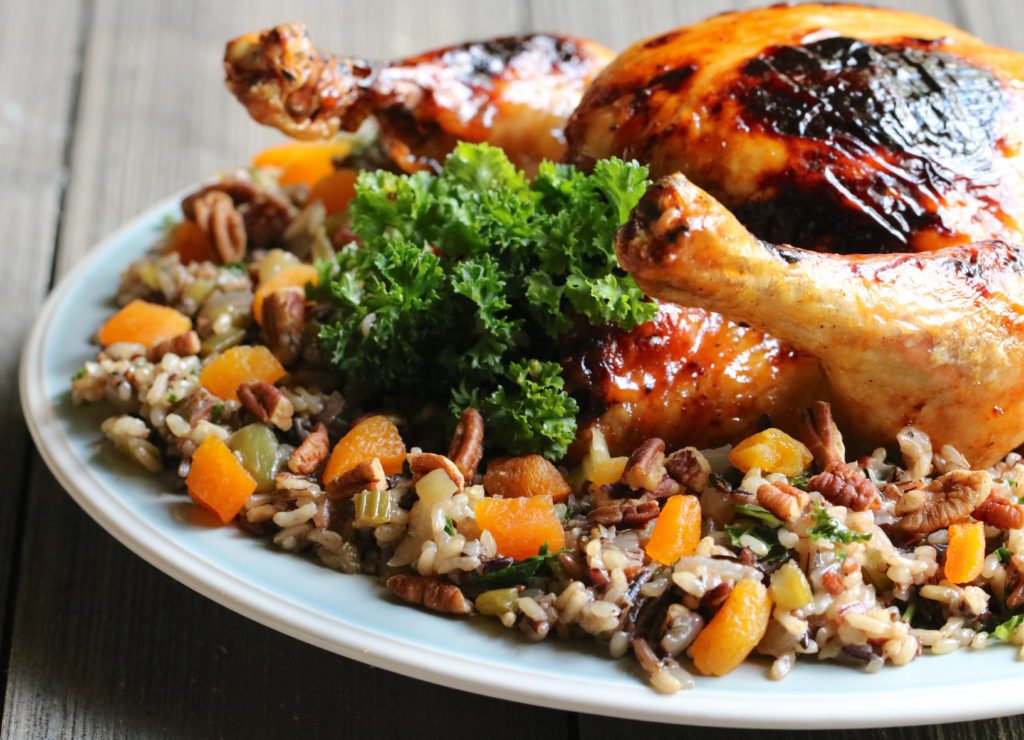
💥 SAVE 54% on the PN Nutrition Certification + Coaching Career Kickstarter Course! Ends Friday.

💥 SAVE 54% on the PN Nutrition Certification + Coaching Career Kickstarter Course!

Apricots are adorable little stone fruits with velvety golden orange skin and a tangy sweet flesh that tastes like a cross between a peach and a plum. Perhaps as commonly (if not more) available as fresh apricots are dried apricots. In their dried form, their flavor and sugars concentrate making these wrinkly bright orange discs almost like candy. In addition to the fruit, the kernel inside the apricot pit is also edible and is sometimes used as an amaretto flavoring agent due to its strong bitter almond taste. Apricots are a symbol of summer and come into season in May through August, and they are most delicious during this time. Apricots are a good source of vitamin C and beta-carotene. Due to their small size, they are often eaten in multiples. Eating one apricot is like only watching your favorite childhood movie once; it’s just not done.
Delicate and adorable, apricots are small, velvet-skinned stone fruits belonging to the same plant family as peaches and plums.
Historically, apricots have a reputation of being an aphrodisiac. In Shakespeare’s A Midsummer Night’s Dream, Titania directs her fairies to feed Puck apricots as part of a love potion used to ignite passion between them. In Australia, Aboriginals made an aphrodisiac tea by steeping apricot kernels, which are also edible and have a bitter amaretto flavor.
Apricots trace their oldest roots back to China, although they arrived in Europe via Armenia, which is where it derives its scientific name, Prunus armeniaca. Apricots came to North America in the late 1700s’, with the climate in California best suiting this plant’s preferences. Today, Turkey is the world’s top producer of apricots.
Apricots are small, averaging about two inches in diameter. They have a delicate, velvety skin that is golden orange in color, sometimes with a blush of red where it faced the sun. Similar to a peach, apricots also have a subtle cleavage that runs along the length of one side.
The fruit is not overly juicy but has a lovely sweet and tart flavor that is a cross between that of a peach and a plum. Inside, apricots bear a pit which in turn bears an almond-like kernel, which are also sometimes eaten.
Dried apricots are also widely available and appear as vibrant orange, slightly wrinkled, chewy discs. However, dried apricots retain their sunset hue only when treated with sulfur dioxide, a preservative. If you find apricots that are untreated, they will be brown, but just as delicious.
Two small apricots (about 70g) have 34 calories, 1.0g of protein, 0.3g of fat, 7.8g of carbohydrates, 1.4g fiber, and 6.5g sugar. Apricots are a good source of vitamin C and beta-carotene.
Apricots are a symbol of summer and come into season May through August in North America. During this time, they will be available fresh at most grocery stores and markets.
Look for apricots that have a rich orange pigment and those that yield slightly to a gentle squeeze. Those that are pale or too hard were likely picked before they were ripe and will be less flavorful than a tree-ripened apricot.
Store ripe apricots at room temperature for up to three days. If they are ripening too quickly, you can transfer them to the fridge to slow this process. Apricots may also be pitted and sliced, and then frozen in an airtight container for up to six months.
Try to avoid piling apricots on top of one another, or with other fruit; their delicate skin is easily bruised.
Like an apple, apricots are ready as-is to have your teeth sunk into them. All that’s needed is a quick rinse, and then you may eat it straight, or slice it. They are also delicious blended in a smoothie or topped on yogurt.

There is nothing quite like tying flavors into all aspects of a meal. With this apricot glazed chicken and apricot wild rice stuffing, you’ll look like a pro!
Prep Time: 10 minutes Cook Time: 140 minutes Yield: 5-6 servings
For the Jam:
Bring a pot to a boil and place the whole apricots in the water for 2 minutes or so. Add them to cold water or ice water to cool down and gently slip the skins off. Next, slice the apricots in half and remove the pit.
Remove the water from the pot and add the sliced apricots back in. Add in the honey and lemon juice and cook on medium-low heat. Stir continuously and cook until easily mashed into a thick jam-like appearance. Store in the fridge or set aside to use immediately for the chicken recipe.
For the Chicken and Stuffing:
Preheat oven to 400 degrees Fahrenheit.
Brush chicken with olive oil and sprinkle sea salt and pepper on the outside.
Place chicken inside a roasting pan and place the lid on top, with the holes open. If you do not have a lid, place tin foil over top and make small slits / holes in the tin foil.
Roast for 1.5 hours (depending on the size of your chicken this time may need to be adjusted – times are calculated at 20 minutes per pound + 15 minutes. Take your total time and decrease it by 30 minutes as you will continue to roast the chicken at a higher heat for the last 30 minutes. For example – if your chicken takes a total of 2 hours, you will cook it for 1.5 hours in this step, and the additional 30 minutes in a later step).
While the chicken is cooking, heat a large saucepan on medium heat and add 2 tbsp of extra virgin olive oil.
Chop the celery, onion, kale, apricots, and pecans separately. Add celery and onion to the saucepan and cook until translucent. Set kale, apricots, and pecans aside separately.
Add rice, broth, bay leaf, thyme, and water to the saucepan, stir, and simmer covered for 40 minutes – checking around 30 minutes to ensure you have enough liquid. Add more water as needed to prevent burning at the bottom of the pan.
Remove the saucepan lid and reduce heat slightly. Stir frequently until remaining liquid is absorbed (approx. 5 minutes). Once absorbed, add finely chopped kale on top, place lid back on, and allow to steam until kale is soft. Stir into mixture.
Stir in chopped apricots and pecans and remove bay leaf from the stuffing mixture and set aside, covered, until chicken is ready.
When the chicken has cooked for 1.5 hours (or 30 minutes less than your calculated time) remove the lid from roasting pan and baste the chicken using the juice from the pan. Turn oven up to 450 degrees Fahrenheit and keep roasting with the lid / foil lid off.
Mix together apricot jam, apple cider vinegar, and 1 tbsp extra virgin olive oil. After the chicken has cooked for 15 minutes at the high temperature, brush the glaze (leaving some leftover) onto the chicken and roast for another 15 minutes – or as long as you need until the chicken has reached an internal temperature of 165 degrees Fahrenheit (no longer pink and juices run clear).
Remove the chicken from the oven once cooked, brush on some additional glaze and let sit, covered in tin foil, for approximately 10 minutes to let the juices settle.
Serve with stuffing.
Enjoy!
Precision Nutrition’s Encyclopedia of Food expands every single month as we highlight new foods and showcase beautiful food photography. If you’d like to stay up to date, simply click this link. From there, we’ll send you a FREE copy of our recipe book. We’ll also let you know when new and delicious foods are added to the site.
Apricots are adorable little stone fruits with velvety golden orange skin and a tangy sweet flesh that tastes like a cross between a peach and a plum. Perhaps as commonly (if not more) available as fresh apricots are dried apricots. In their dried form, their flavor and sugars concentrate making these wrinkly bright orange discs almost like candy. In addition to the fruit, the kernel inside the apricot pit is also edible and is sometimes used as an amaretto flavoring agent due to its strong bitter almond taste. Apricots are a symbol of summer and come into season in May through August, and they are most delicious during this time. Apricots are a good source of vitamin C and beta-carotene. Due to their small size, they are often eaten in multiples. Eating one apricot is like only watching your favorite childhood movie once; it’s just not done.